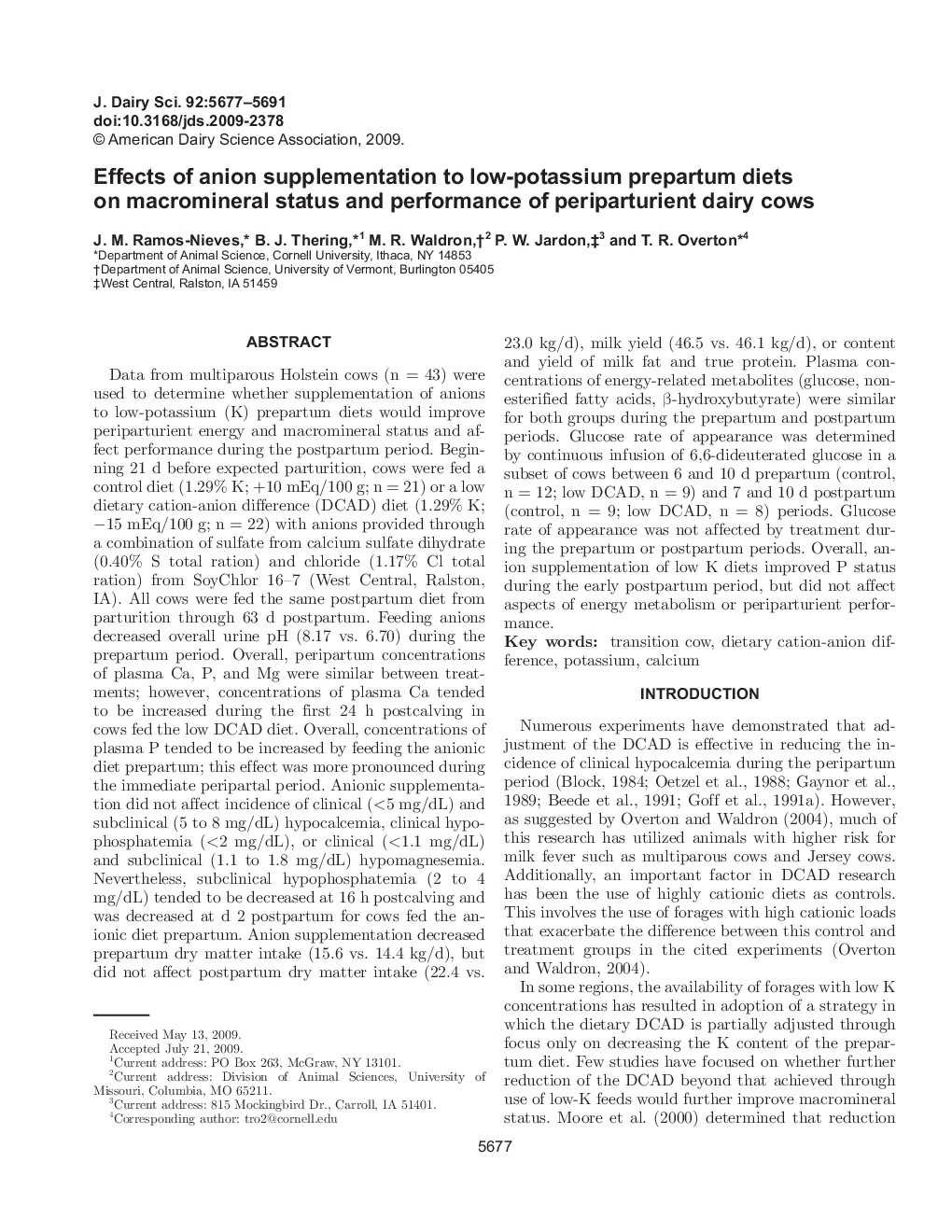| Article ID | Journal | Published Year | Pages | File Type |
|---|---|---|---|---|
| 2439130 | Journal of Dairy Science | 2009 | 15 Pages |
Abstract
Data from multiparous Holstein cows (n = 43) were used to determine whether supplementation of anions to low-potassium (K) prepartum diets would improve periparturient energy and macromineral status and affect performance during the postpartum period. Beginning 21 d before expected parturition, cows were fed a control diet (1.29% K; +10 mEq/100 g; n = 21) or a low dietary cation-anion difference (DCAD) diet (1.29% K; â15 mEq/100 g; n = 22) with anions provided through a combination of sulfate from calcium sulfate dihydrate (0.40% S total ration) and chloride (1.17% Cl total ration) from SoyChlor 16-7 (West Central, Ralston, IA). All cows were fed the same postpartum diet from parturition through 63 d postpartum. Feeding anions decreased overall urine pH (8.17 vs. 6.70) during the prepartum period. Overall, peripartum concentrations of plasma Ca, P, and Mg were similar between treatments; however, concentrations of plasma Ca tended to be increased during the first 24 h postcalving in cows fed the low DCAD diet. Overall, concentrations of plasma P tended to be increased by feeding the anionic diet prepartum; this effect was more pronounced during the immediate peripartal period. Anionic supplementation did not affect incidence of clinical (<5 mg/dL) and subclinical (5 to 8 mg/dL) hypocalcemia, clinical hypophosphatemia (<2 mg/dL), or clinical (<1.1 mg/dL) and subclinical (1.1 to 1.8 mg/dL) hypomagnesemia. Nevertheless, subclinical hypophosphatemia (2 to 4 mg/dL) tended to be decreased at 16 h postcalving and was decreased at d 2 postpartum for cows fed the anionic diet prepartum. Anion supplementation decreased prepartum dry matter intake (15.6 vs. 14.4 kg/d), but did not affect postpartum dry matter intake (22.4 vs. 23.0 kg/d), milk yield (46.5 vs. 46.1 kg/d), or content and yield of milk fat and true protein. Plasma concentrations of energy-related metabolites (glucose, nonesterified fatty acids, β-hydroxybutyrate) were similar for both groups during the prepartum and postpartum periods. Glucose rate of appearance was determined by continuous infusion of 6,6-dideuterated glucose in a subset of cows between 6 and 10 d prepartum (control, n = 12; low DCAD, n = 9) and 7 and 10 d postpartum (control, n = 9; low DCAD, n = 8) periods. Glucose rate of appearance was not affected by treatment during the prepartum or postpartum periods. Overall, anion supplementation of low K diets improved P status during the early postpartum period, but did not affect aspects of energy metabolism or periparturient performance.
Related Topics
Life Sciences
Agricultural and Biological Sciences
Animal Science and Zoology
Authors
J.M. Ramos-Nieves, B.J. Thering, M.R. Waldron, P.W. Jardon, T.R. Overton,
